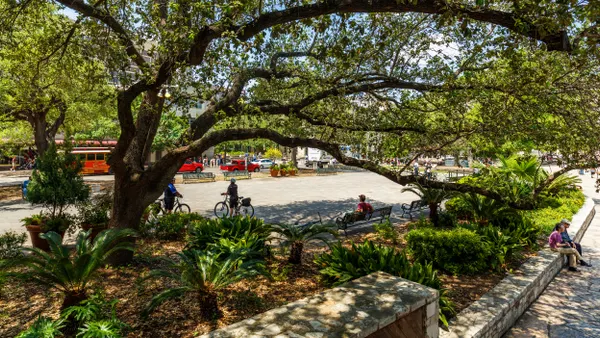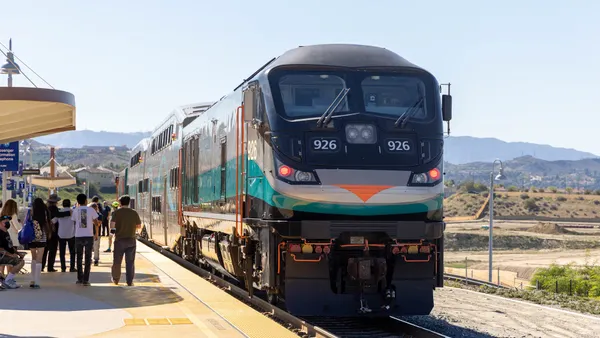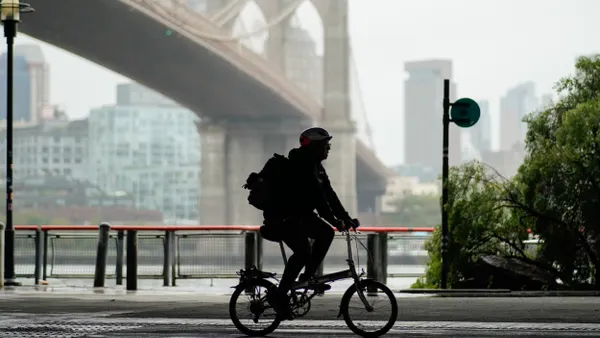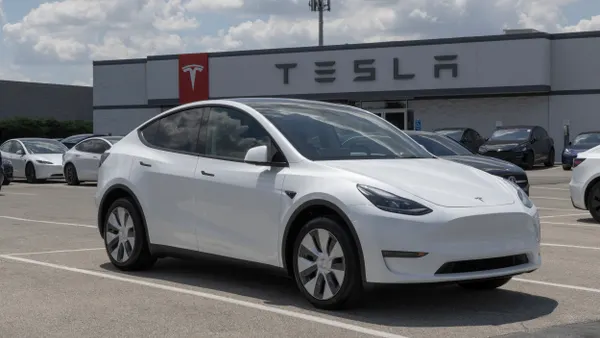Dive Brief:
- Online used car sales site Carvana has opened a vehicle vending machine in the Washington, DC suburb of Gaithersburg, MD.
- The eight-story, all glass tower holds up to 30 vehicles and is fully automated. Customers receive a large, specialized coin to retrieve their vehicle from the vending machine.
- The new vending machine is Carvana's 10th, joining others in Houston; Dallas; Austin, TX; San Antonio, TX; Nashville, TN; Raleigh, NC; Charlotte, NC; Jacksonville, FL and Tampa, FL.
Dive Insight:
While U.S. cities push for residents to become less car dependent, some private companies' innovations offer a striking reminder: People love the convenience of personal vehicles and do not want to give up that mobility option. In addition, many Americans who live in suburban or rural areas who don't have quick access to transit lines view personal vehicles as more of a necessity because they're a more easily accessible, cost-effective and time-efficient transportation option. Such is the case in Maryland, where the communities quickly go from urban near DC, to suburban and rural, and outlying areas have an abundance of country roads but little or no public transit.
Innovative businesses have experienced success in the past decade by capitalizing on Americans' desire for convenient transportation, with ride-share businesses Uber and Lyft proving to be two of the most well-known examples. Their business model also taps into Americans' high personal vehicle ownership — only about 9% of U.S. households didn't own a car in 2016 — although Uber is expanding to other modes of transportation with its recent acquisition of dockless bike-share company Jump.
Carvana's vehicle vending machine gives consumers a lot of what they want with cars and convenience, but it also relies on something else: Novelty. Gimmicks such as using a huge coin to get a car out of a vending machine might seem hokey at first, but they attract customers who increasingly seek new experiences. Novelty probably initially contributed to ride-share's success, too. If a customer likes their novel experience, they'll be more likely to transform their behavior into a repeat service user.
Some public transportation systems are trying to innovate in novel ways and upgrade technology to make transit more convenient, give customers more of what they want and boost lagging ridership. Cities including Austin, St. Louis and several in California are trying out microtransit to close first mile/last mile gaps and boost convenience. Los Angeles and Washington, DC are among a handful cities modernizing and increasing public transit convenience by developing mobile device fare payment systems.











